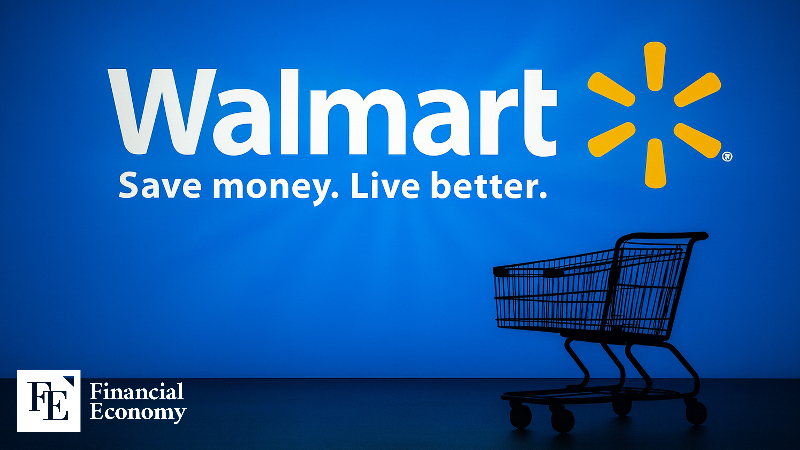Walmart Warns of Price Pressure as Tariffs Drive Broader Inflation Risks
Input
Modified
Walmart Posts Higher Q2 Sales but Lower Operating Profit Producer Prices Record Biggest Jump in Years, Outpacing CPI Signs of Rising Prices Spark Fears of Inflation’s Return

Walmart, the largest U.S. retailer, signaled possible price hikes after reporting shrinking margins. With profits pressured by Washington’s escalating tariff war, the prolonged squeeze is beginning to ripple across industries, fueling a broader trend toward rising consumer prices.
Walmart’s Low-Price Strategy Hits a Wall
On August 21, the Financial Times reported that Walmart flagged mounting pressure to raise prices as President Donald Trump’s tariffs take hold. With holiday shopping season approaching and procurement costs climbing, the retailer publicly acknowledged it may be forced to adjust prices. Roughly one-third of Walmart’s U.S. merchandise is sourced from countries such as China, Mexico, Vietnam, and India. CEO Doug McMillon admitted that while the initial impact of tariffs was gradual, replenishing inventories has now led to weekly cost increases likely to persist through year’s end.
Until now, Walmart has fought to keep prices as low as possible. In Q2, consumer prices at its 4,600 U.S. stores rose just 1.1% year-on-year—more than double the previous quarter’s pace but still below the national inflation rate. This pricing edge helped boost global revenue by 4.8% to $177.4 billion. However, operating income fell 8.2% to $7.3 billion, undershooting expectations. As FT noted, Walmart’s sales surged as consumers sought shelter from above-average price hikes elsewhere, but profits failed to keep pace.
Industry-Wide Wave of Price Hikes
Walmart is hardly alone in feeling the squeeze from the tariff war. Companies that had absorbed costs by sacrificing margins are now being forced to pass them on to consumers. According to CBS News, U.S. experts warn that prices of imported footwear and apparel could rise by 30–40% in the coming months. With steep tariffs imposed on key sourcing countries, a rapid escalation in retail prices looks inevitable. China, which supplies the bulk of imported shoes sold in the U.S., now faces tariffs of 34%. Vietnam, Indonesia, and India—major suppliers of apparel—are hit with duties of 20%, 19%, and 50%, respectively.
The auto industry has also begun adjusting prices upward. Ford was the first to act, raising sticker prices on three Mexico-made models by $600–2,000 in early May, citing tariffs as the reason. The company absorbed $800 million in tariff costs in Q2 alone, reporting a $36 million net loss, and expects total tariff-related expenses to reach $3 billion by year’s end.
Other automakers quickly followed suit. BMW lifted U.S. prices by up to $2,500 on non-electric models. Porsche raised prices 2.3–3.6%, after losing an estimated $462 million in the first half of the year due to tariffs. Aston Martin increased U.S. prices by about 3% last month, while Toyota—the world’s largest carmaker—raised prices by $270 per vehicle starting July 1. Toyota reported ¥450 billion ($4.23 billion) in operating losses in Q2 as a direct result of U.S. tariff policy.

Markets Rattled by Surprising Data
The latest inflation trend in the U.S. is now clearly visible in official statistics. On August 14, the Labor Department reported that the Producer Price Index (PPI) rose 0.9% in July from the previous month—far above Wall Street’s forecast of 0.2% and the sharpest increase since June 2022. Even excluding volatile components such as food, energy, and trade services, core PPI climbed 0.6%, the steepest rise since March 2022.
The figures shocked markets, coming just two days after July’s Consumer Price Index (CPI) showed a 2.7% year-over-year rise, below expectations and fueling optimism that inflationary pressures were easing. Chris Zaccarelli, CIO of NorthLight Asset Management, told CNN, “The sharp jump in PPI shows that inflation is spreading through the economy, even if consumers don’t feel it yet.”
Because PPI is generally considered a leading indicator for CPI, many fear that consumer prices could soon follow. Clark Geranen, chief market strategist at CalBay Investments, told CNBC, “The fact that PPI was stronger than expected while CPI looked stable means companies are still absorbing much of the tariff costs. But they will soon shift and start passing those costs on to consumers.”





















